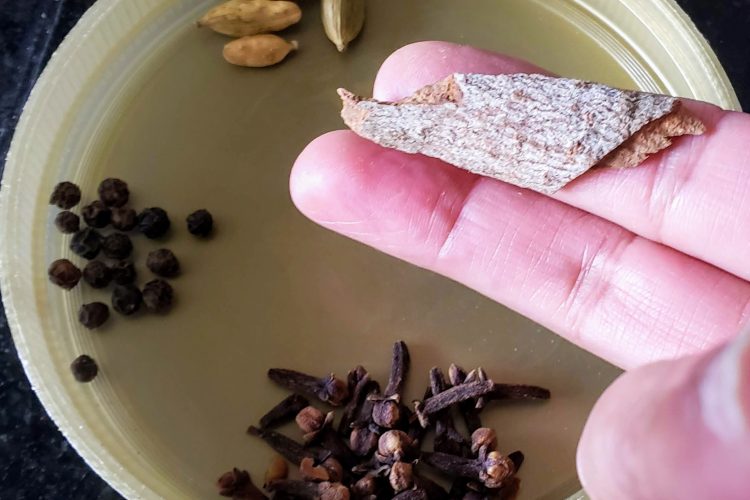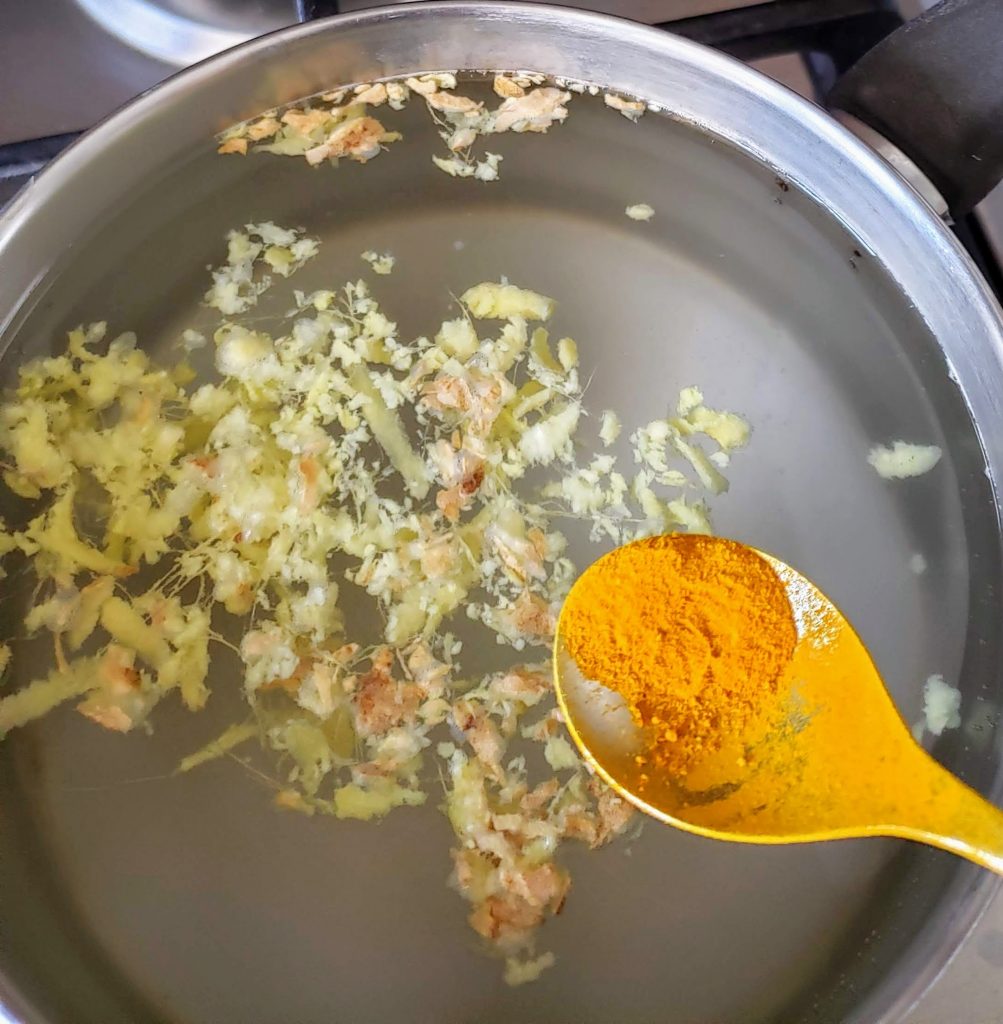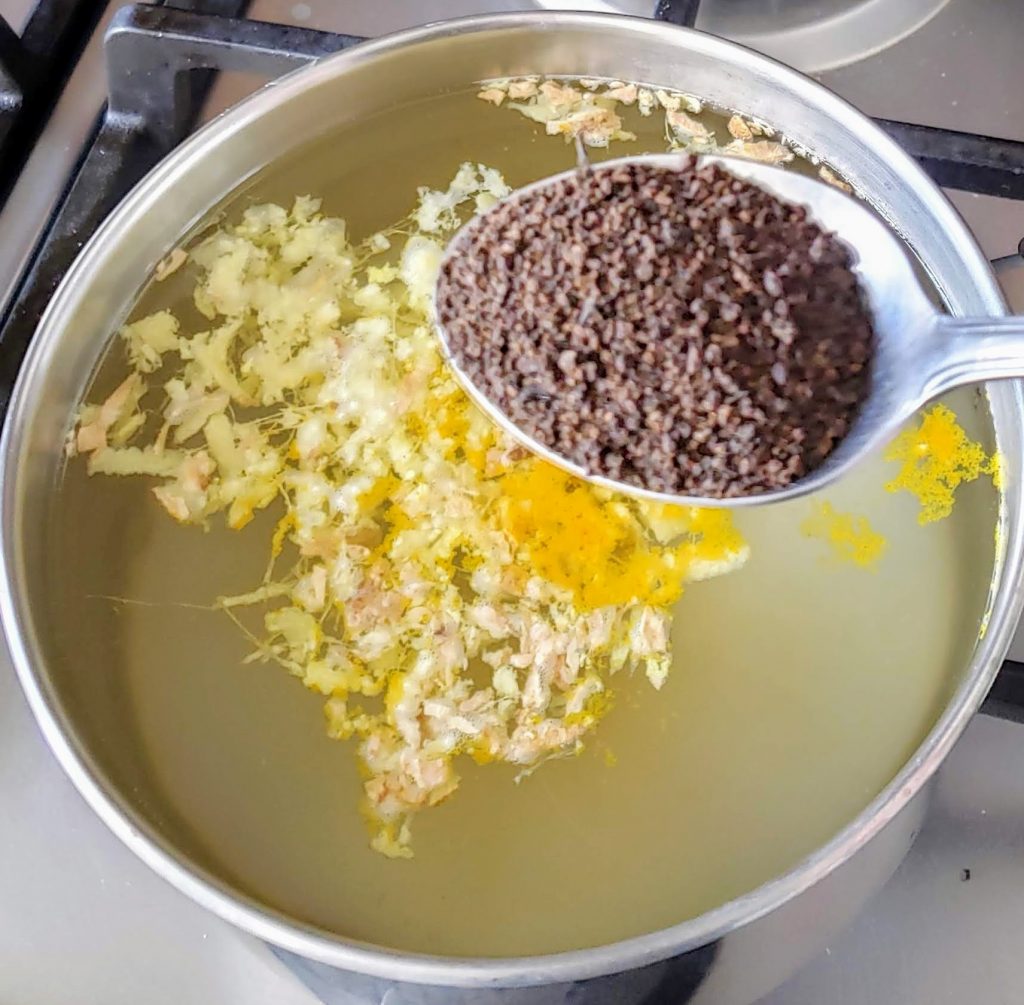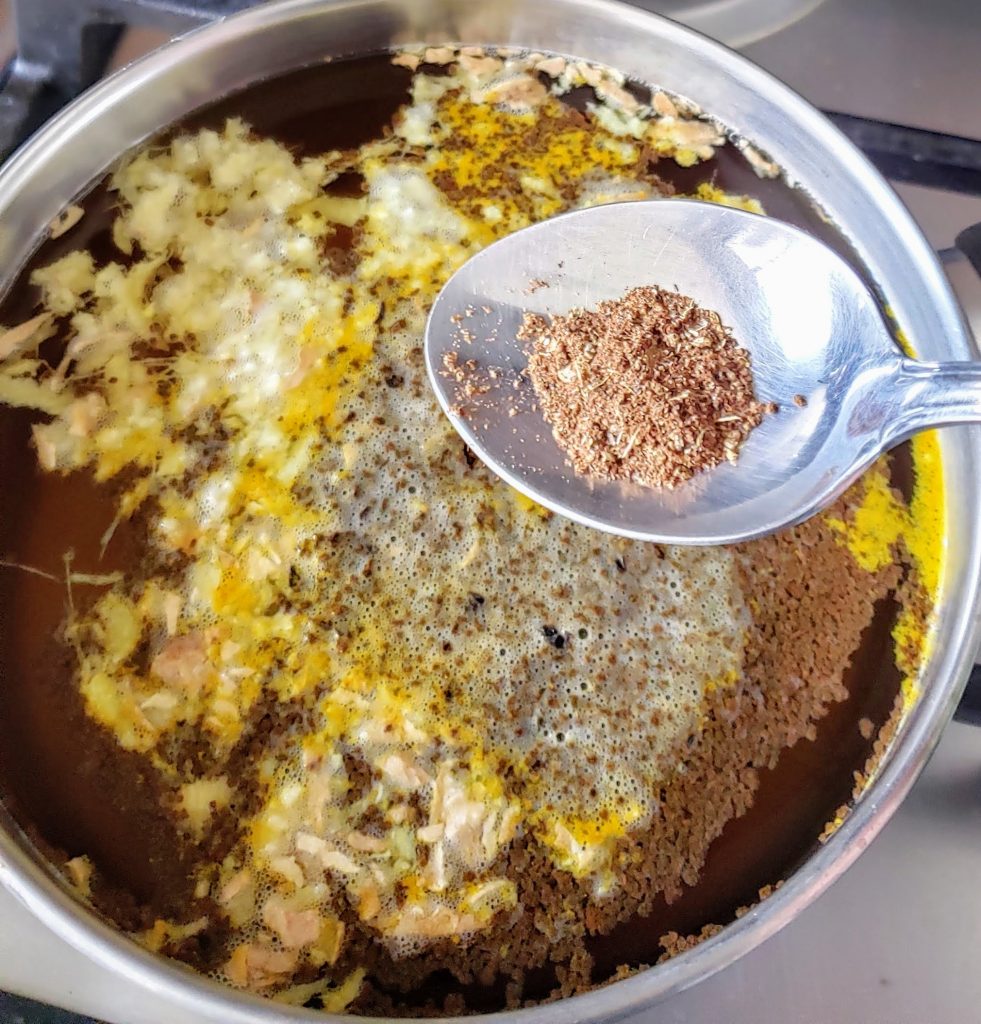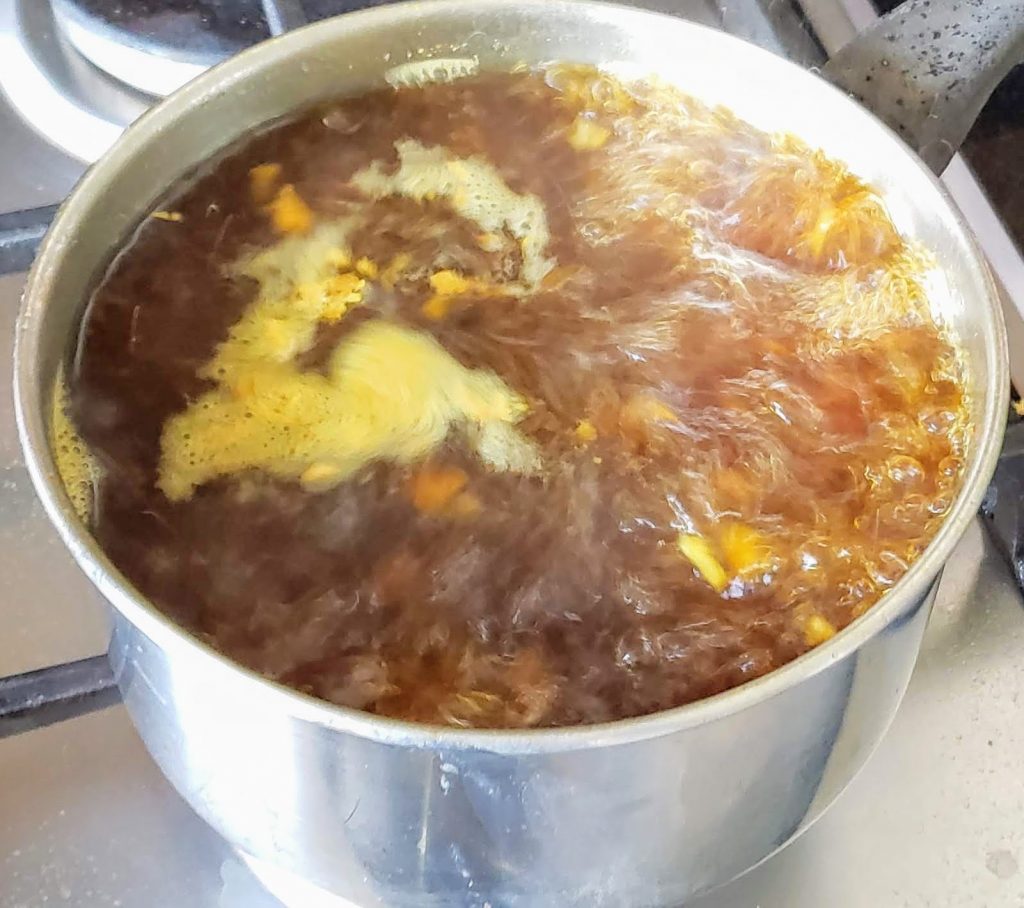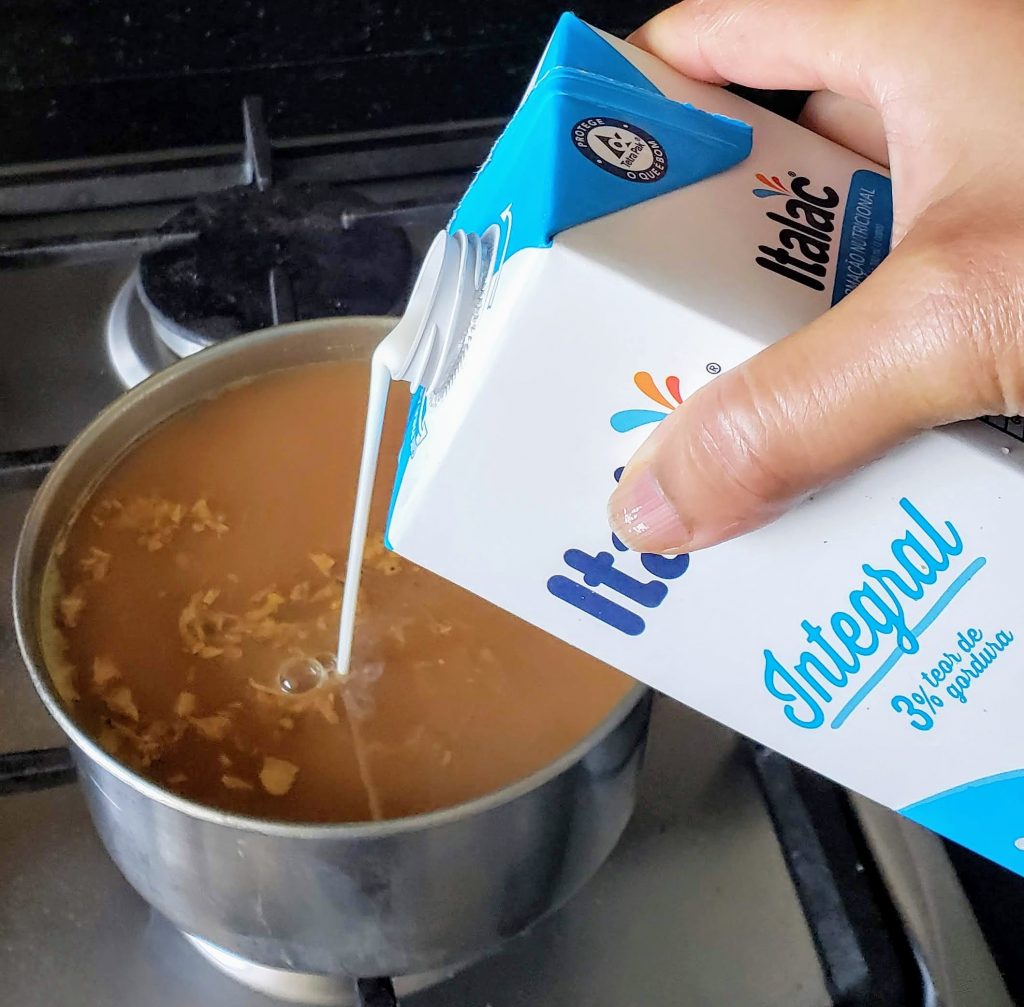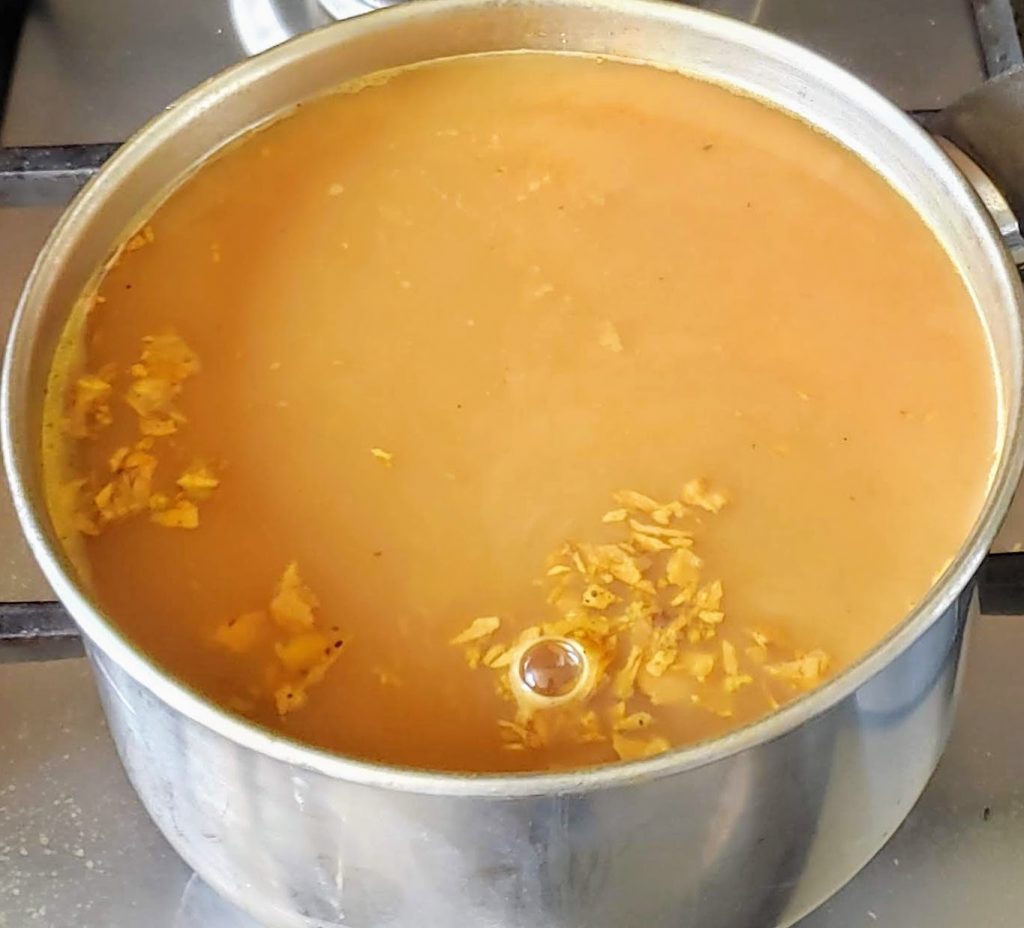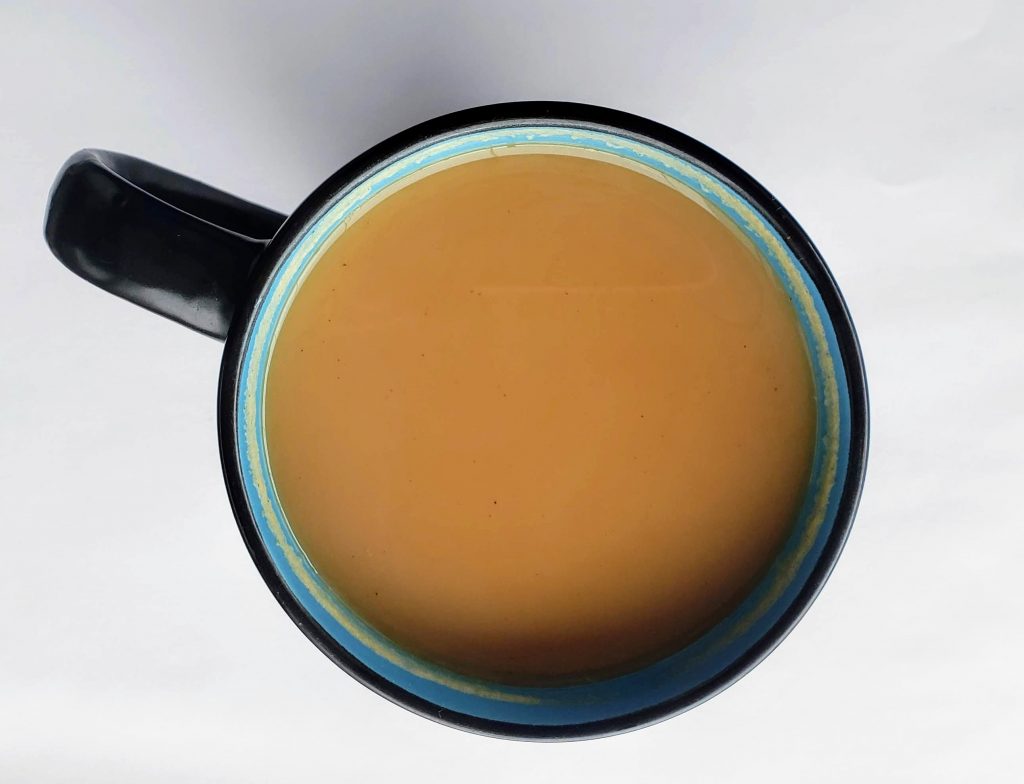My daughter is sick again due to stress, air travel, and lack of sleep. Here is what I plied her with yesterday. I make this tea daily for myself for general health purposes and to help jump-start my day.
It is made of my formula for Masala Chai plus two other ingredients for health. By the way, no Indian calls it Chai tea as that translates to saying tea, tea:):)
Prep time: 5 minutes
Cook time: 7-10 minutes
Yield: 1 serving
Ingredients for cold remedy part ii
- *1/2 stick cinnamon, broken into small pieces
- *1/2 teaspoon whole black peppercorns
- *1 teaspoon whole cardamom
- *2 teaspoons whole cloves
- *1/8-1/4 teaspoon turmeric powder – go easy, it’s bitter tasting
- *1 teaspoon loose leaf black tea or 1 tea bag – I like loose leaf tea. I use Brooke Bond, Red Label tea. There are other good tea brands like Vital or Wagh Bakri.
- 1-inch piece of fresh ginger, grated
- 2 cups of water
- 2-4 tablespoons milk, to taste – Replace milk with Soy milk to make it Vegan.
- honey or sugar to taste
INSTRUCTIONS
1.In a quart pan pour in the water and set to heat.
2. Add the grated ginger, turmeric powder, and the tea.
3. Grind the first four ingredients to a powder in a coffee grinder or small blender or a mortar and pestle. This is Chai Masala. If you wish, you can multiply this recipe and save the excess in a glass jar in your refrigerator or freezer.
I have a coffee grinder dedicated to spices as I don’t like to contaminate the tastes of either the coffee or the spices.
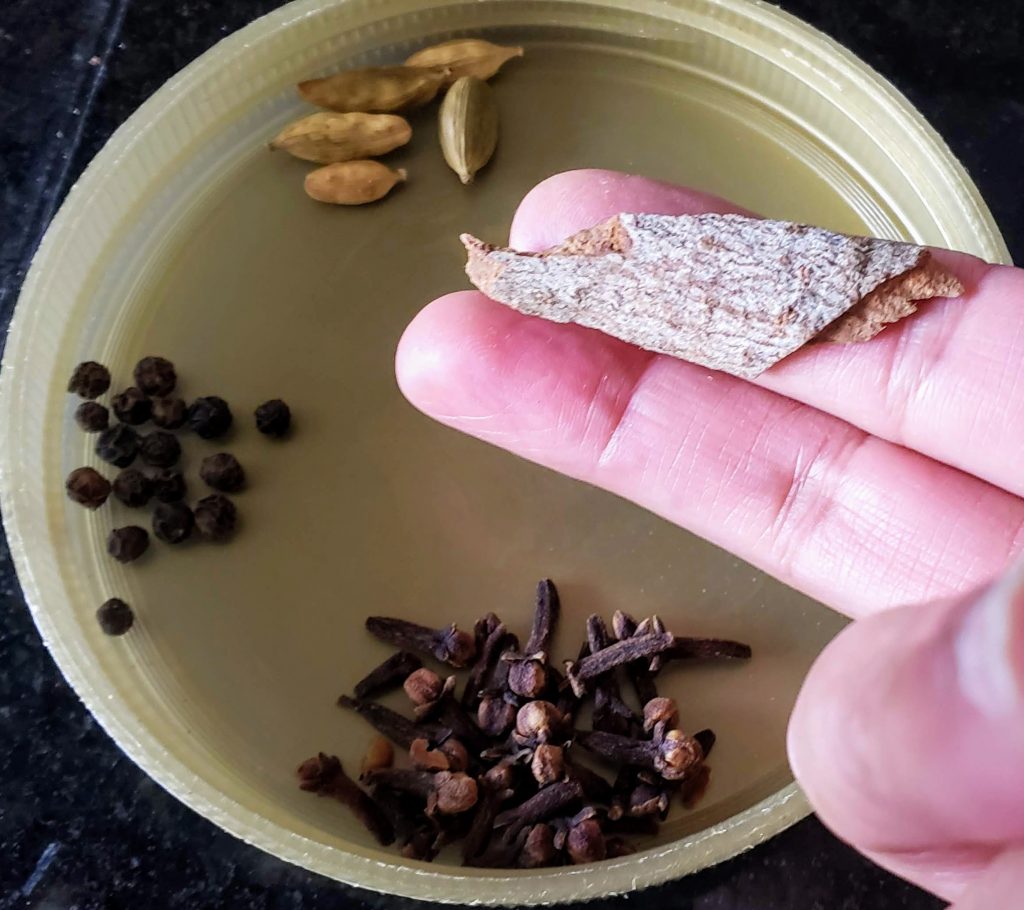
Cinnamon, cloves, black pepper, green cardamom
4. Add 1/8 teaspoon of Chai Masala to the boiling water. Add the milk and sugar or honey to taste. I don’t sweeten my tea, but my kids like their tea sweet. Replace milk with Soy milk to make it Vegan.
Strain the tea into a cup and drink to your health and enjoyment!
Note: * These ingredients may be purchased at your local Indian grocer. For this reason, I have given you the name of the spice both in English and Hindi as that is the name (written phonetically in the English alphabet) you will find it under when you go shopping.
Spices impart specific flavors and aromas that enhance the overall flavor of the dish when used correctly. Moreover, they have a lot of health benefits. The list below specifies:
- The name of the spice;
- The flavor(s) it imparts;
- How and when it may be used; and, finally,
- It’s health benefits.
Kali Mirch (black pepper) – Sharp, spicy. Whole peppercorns can be added early on when using them to season cooking oil. However, the ground form is only used toward the end of cooking. Black pepper is used as a condiment and a food preservative. It is one of the components of Garam Masala and Chaat Masala. It is used whole to season doughs like Mathi (savory crip wafer). It is most often ground and used as a condiment in cooked foods. The ground form, when mixed with honey is used to relieve coughs and sore throats and improve breathing. Whole peppercorns are brewed into a tisane to effect the same benefits. For best results, don’t buy it preground as you’ll lose not only flavor but also many health benefits. BLACK PEPPER INCREASES THE BIOAVAILABILITY of certain other nutrients, especially, but not limited to CURCUMIN, WHICH IS THE ACTIVE INGREDIENT OF TURMERIC. It helps reduce swelling; is a known antibacterial; it’s an anti-inflammatory; and, is high in antioxidants. It is a natural pain killer. In ancient times, it was used in conjunction with salt to preserve meat. It helps drain the sinuses.
Dal Chini (Cinnamon) – Sweet, sharp. Whole cinnamon is added as one of the first spices to season cooking oil. Indians use it for savory dishes, like rice and meat. Certain vegetarian dishes also benefit from it. It is also used as a component of Garam Masala and Chai Masala. Western cultures use it for desserts, bread and to flavor drinks such as apple cider. Cinnamon improves the body’s sensitivity to insulin, thus reducing blood sugar. It is an anti-inflammatory and helps reduce joint pain; it’s high in antioxidants (even more so than oregano and garlic); and, it is a natural food preservative. It also helps with weight loss.
Laung (cloves) – Astringent, sharp. Whole cloves are added later into the cooking oil but before the powdered turmeric or cayenne pepper. Ground cloves as a component in Garam Masala and Chai Masala. Cloves are used in savory dishes such as rice pullaos or biriyanis and to flavor meat and vegetable gravies. Western cultures use cloves in desserts. Clove oil is used as a natural anesthetic for toothaches. Whole cloves are chewed as a breath freshener, they help improve liver health, and can kill off bacteria.
Hari Ilachi (green cardamom) – Sweet, slightly astringent. Green cardamom can be added early on in the cooking process. It is used in both sweet and savory dishes. Green cardamom is a major component in Chai Masala. It is used to season drinks such as Mango Lassi. It complements dairy-based desserts. It is used in making biriyanis and lamb or goat curries. Cardamom is chewed whole as a breath freshener. It helps to add a little sugar in the blender to help grind cardamom into a fine powder. Cardamom is a natural bactericide and helps prevent cavities; helps lower blood pressure; aids in digestion; and, helps clean out the urinary tract, bladder, and the kidneys as it is a natural diuretic.
Haldi (turmeric powder) – Bitter and earthy. Turmeric is added to the oil after all the other spices during the cooking process. Used in powder form or the fresh, grated or minced form to season vegetable and meat dishes. Made into a pickle and eaten fresh. Boiled using fresh minced or powdered into a Tisane. Powdered form mixed with yogurt and black pepper and consumed. Added in powdered form to milk and consumed to combat sickness like cold/flu/throat ache or help reduce swelling in the body. Mixed with oil (coconut or any neutral tasting oil) into a paste as a wound dressing to prevent infection and reduce swelling; or, rubbed onto the face as a skin cleanser. The main active ingredient is curcumin. CURCUMIN IS POORLY ABSORBED BY THE BODY AND MUST BE CONSUMED WITH BLACK PEPPER TO INCREASE ITS ABSORPTION BY 2000%. If you are using a turmeric supplement, make sure it contains piperine (BioPerine) to help with curcumin absorption, otherwise, the curcumin will just pass through your body and not be absorbed. Curcumin is fat-soluble, so it is good to eat turmeric with a fatty meal. Curcumin is a powerful anti-inflammatory and anti-oxidant. Fights Alzheimer’s and depression by increasing a growth hormone (BDNF) that increases the growth of new neurons. Helps minimize the risk of heart disease. Helps fight cancer.
Adrak (ginger) – Sharp, spicy. Used fresh in cooking. It is added after the oil has been seasoned by whole spices. It is added after the onions as it tends to burn easily whereas onions require more time to caramelize. It is added alongside garlic as they both have similar browning properties. It is oftentimes pickled. It is used as a condiment to garnish vegetarian dishes like Chole (white chickpea stew); Dahi Vada (lentil dumplings in yogurt); and, toasted lightly in butter and added to Saag (cooked, pureed mustard greens). It is used in its powdered form to season certain kinds of Ladoos (a kind of Indian Granola ball made and eaten for health reasons). It’s powdered form is used to make candy-like pills called “Churun” used as digestive aid and other forms to combat nausea. Used to treat nausea. It is an anti-inflammatory and aids in the discomfort caused by osteoarthritis. It is a strong anti-oxidant; helps relieve menstrual pain; it is good for lowering cholesterol and blood sugar; and, helps you lose weight.
Written by Anju Kapur of Anju’s Table. All content and images on this site are copyright protected. Please do not use any of my images without my permission. Should you wish to share this recipe on your site, please add a link to this post as the source.
